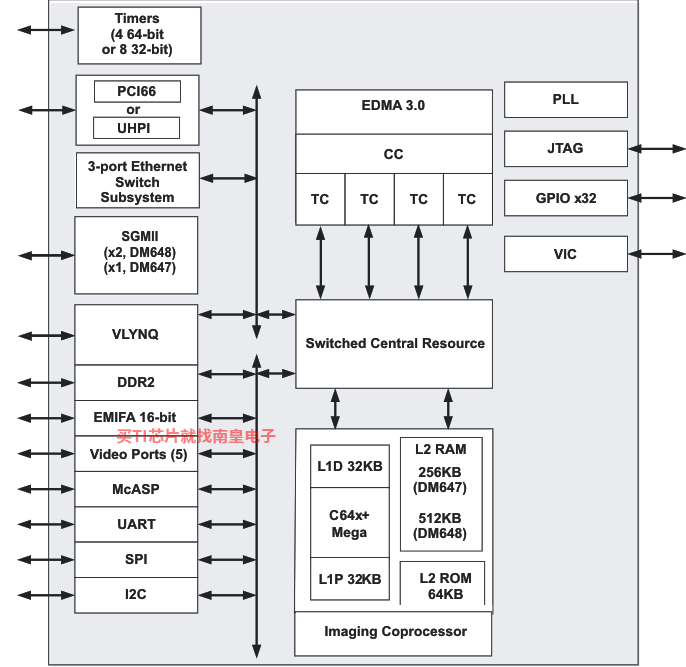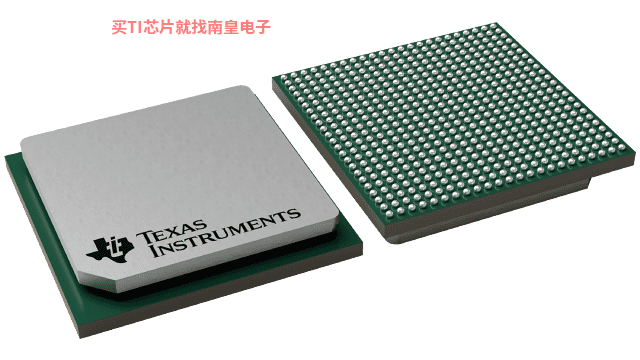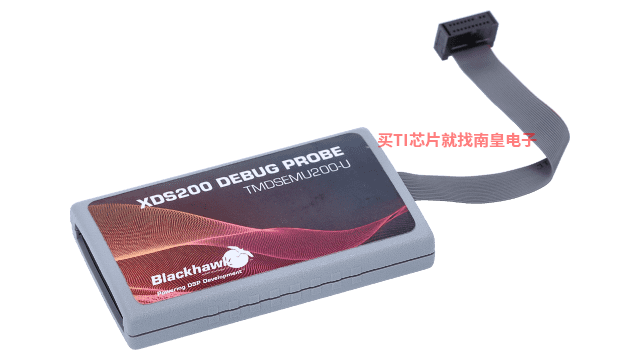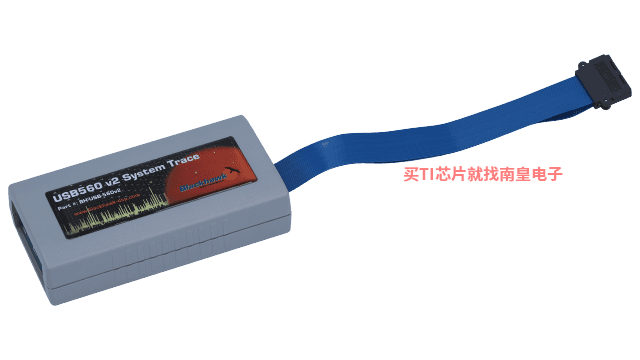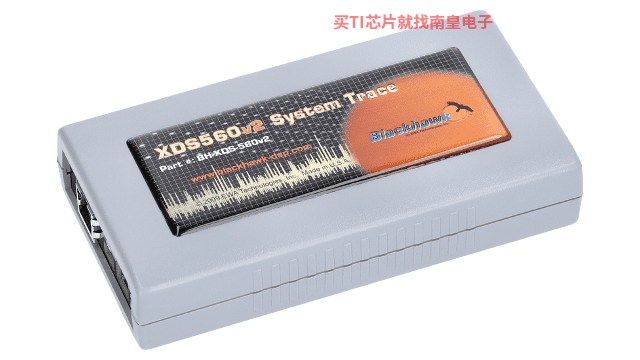
- 制造厂商:TI
- 产品类别:微控制器 (MCU) 和处理器
- 技术类目:处理器 - 数字信号处理器 (DSP)
- 功能描述:数字媒体处理器
- 点击这里打开及下载TMS320DM648的技术文档资料
- TI代理渠道,提供当日发货、严格的质量标准,满足您的目标价格

The TMS320C64x+™ DSPs (including the TMS320DM647/TMS320DM648 devices) are the highest-performance fixed-point DSP generation in the TMS320C6000™ DSP platform. The DM647, DM648 devices are based on the third-generation high-performance, advanced VelociTI™ very-long-instruction-word (VLIW) architecture developed by Texas Instruments (TI), making these DSPs an excellent choice for digital media applications. The C64x+™ devices are upward code-compatible from previous devices that are part of the C6000™ DSP platform. The C64x™ DSPs support added functionality and have an expanded instruction set from previous devices.
Any reference to the C64x DSP or C64x CPU also applies, unless otherwise noted, to the C64x+ DSP and C64x+ CPU, respectively.
With performance of up to 8800 million instructions per second (MIPS) at a clock rate of 1.1 GHz, the C64x+ core offers solutions to high-performance DSP programming challenges. The DSP core possesses the operational flexibility of high-speed controllers and the numerical capability of array processors. The C64x+ DSP core processor has 64 general-purpose registers of 32-bit word length and eight highly independent functional units—two multipliers for a 32-bit result and six arithmetic logic units (ALUs). The eight functional units include instructions to accelerate the performance in video and imaging applications. The DSP core can produce four 16-bit multiply-accumulates (MACs) per cycle for up to 4400 million MACs per second (MMACS), or eight 8-bit MACs per cycle for up tp 8800 MMACS. For more details on the C64x+ DSP, see the (literature number SPRU732).
The devices also have application-specific hardware logic, on-chip memory, and additional on-chip peripherals similar to the other C6000 DSP platform devices. The core uses a two-level cache-based architecture. The Level 1 program cache (L1P) is a 256K-bit direct mapped cache and the Level 1 data cache (L1D) is a 256K-bit 2-way set-associative cache. The Level 2 memory/cache (L2) consists of a 4M-bit (DM648) or 2M-bit (DM647) memory space that is shared between program and data space. L2 memory can be configured as mapped memory, cache, or combinations of the two.
The peripheral set includes five configurable 16-bit video port peripherals (VP0, VP1, VP2, VP3, and VP4). These video port peripherals provide a glueless interface to common video decoder and encoder devices. The video port peripherals support multiple resolutions and video standards (e.g., CCIR601, ITU-BT.656, BT.1120, SMPTE 125M, 260M, 274M, and 296M), a VCXO interpolated control port (VIC); a 1000 Mbps Ethernet Switch Subsystem with a management data input/output (MDIO) module and two SGMII ports (DM648) or one SGMII port (only DM647); a 4-bit transmit, 4-bit receive VLYNQ interface; an inter-integrated circuit (I2C) bus interface; a multichannel audio serial port (McASP) with ten serializers; four 64-bit general-purpose timers each configurable as two independent 32-bit timers; a user-configurable 16-bit or 32-bit host-port interface (HPI); 32 pins for general-purpose input/output (GPIO) with programmable interrupt/event generation modes, multiplexed with other peripherals; one UART; and two glueless external memory interfaces: a synchronous and asynchronous external memory interface (EMIFA) for slower memories/peripherals, and a higher DDR2 SDRAM interface.
The video port peripherals provide a glueless interface to common video decoder and encoder devices. The video port peripherals support multiple resolutions and video standards (e.g., CCIR601, ITU-BT.656, BT.1120, SMPTE 125M, 260M, 274M, and 296M).
The video port peripherals are configurable and can support either video capture and/or video display modes. Each video port consists of two channels (A and B) with a 5120-byte capture/display buffer that is splittable between the two channels.
For more details on the video port peripherals, see the (literature number SPRUEM1).
The management data input/output (MDIO) module continuously polls all 32 MDIO addresses to enumerate all PHY devices in the system.
The I2C and VLYNQ ports allow the device to easily control peripheral modules and/or communicate with host processors.
The rich peripheral set provides the ability to control external peripheral devices and communicate with external processors. For details on each of the peripherals, see the related sections later in this document and the associated peripheral reference guides.
The devices have a complete set of development tools. These include C compilers, a DSP assembly optimizer to simplify programming and scheduling, and a Windows™ debugger interface for visibility into source code execution.
- High-Performance Digital Media Processor
- 720-MHz, 800-MHz, 900-MHz, 1.1-GHz C64x+? Clock Rates
- 1.39 ns (-720), 1.25 ns (-800), 1.11 ns (-900), 0.91 ns (-1100) Instruction Cycle Time
- 5760, 6400, 7200, 8800 MIPS
- Eight 32-Bit C64x+ Instructions/Cycle
- Fully Software-Compatible With C64x/Debug
- Commercial Temperature Ranges (-720, -900, and -1100 only)
- Extended Temperature Ranges (-800 only)
- Industrial Temperature Ranges (-720, -900, and -1100 only)
- VelociTI.2? Extensions to VelociTI? Advanced Very-Long-Instruction-Word (VLIW) TMS320C64x+? DSP Core
- Eight Highly Independent Functional Units With VelociTI.2 Extensions:
- Six ALUs (32-/40-Bit), Each Supports Single 32-bit, Dual 16-bit, or Quad 8-bit Arithmetic per Clock Cycle
- Two Multipliers Support Four 16 x 16-bit Multiplies (32-bit Results) per Clock Cycle or Eight 8 x 8-bit Multiplies (16-Bit Results) per Clock Cycle
- Load-Store Architecture With Non-Aligned Support
- 64 32-bit General-Purpose Registers
- Instruction Packing Reduces Code Size
- All Instructions Conditional
- Additional C64x+? Enhancements
- Protected Mode Operation
- Exceptions Support for Error Detection and Program Redirection
- Hardware Support for Modulo Loop Auto-Focus Module Operation
- Eight Highly Independent Functional Units With VelociTI.2 Extensions:
- C64x+ Instruction Set Features
- Byte-Addressable (8-/16-/32-/64-bit Data)
- 8-bit Overflow Protection
- Bit-Field Extract, Set, Clear
- Normalization, Saturation, Bit-Counting
- VelociTI.2 Increased Orthogonality
- C64x+ Extensions
- Compact 16-bit Instructions
- Additional Instructions to Support Complex Multiplies
- C64x+ L1/L2 Memory Architecture
- 256K-bit (32K-byte) L1P Program RAM/Cache [Direct Mapped]
- 256K-bit (32K-byte) L1D Data RAM/Cache [2-Way Set-Associative]
- 2M-bit/256K-byte (DM647) or 4M-Bit/512K-byte) (DM648) L2 Unified Mapped RAM/Cache [Flexible Allocation]
- Supports Little Endian Mode Only
- Five Configurable Video Ports
- Providing a Glueless I/F to Common Video Decoder and Encoder Devices
- Supports Multiple Resolutions/Video Standards
- VCXO Interpolated Control Port (VIC)
- Supports Audio/Video Synchronization
- External Memory Interfaces (EMIFs)
- 32-Bit DDR2 SDRAM Memory Controller With 512M-Byte Address Space (1.8-V I/O)
- Asynchronous 16-Bit Wide EMIF (EMIFA)
- Up to 128M-Byte Total Address Reach
- 64M-Byte Address Reach per CE Space
- Glueless Interface to Asynchronous Memories (SRAM, Flash, and EEPROM)
- Synchronous Memories (SBSRAM and ZBT SRAM)
- Supports Interface to Standard Sync Devices and Custom Logic (FPGA, CPLD, ASICs, etc.)
- Enhanced Direct-Memory-Access (EDMA) Controller (64 Independent Channels)
- 3-Port Gigabit Ethernet Switch Subsystem
- Four 64-Bit General-Purpose Timers (Each Configurable as Two 32-Bit Timers)
- One UART (With RTS and CTS Flow Control)
- One 4-wire Serial Port Interface (SPI) With Two Chip-Selects
- Master/Slave Inter-Integrated Circuit (I2C Bus?)
- Multichannel Audio Serial Port (McASP)
- Ten Serializers and SPDIF (DIT) Mode
- 16/32-Bit Host-Port Interface (HPI)
- Advanced Event Triggering (AET) Compatible
- 32-Bit 33-/66-MHz, 3.3-V Peripheral Component Interconnect (PCI) Master/Slave Interface Conforms to PCI Specification 2.3
- VLYNQ? Interface (FPGA Interface)
- On-Chip ROM Bootloader
- Individual Power-Saving Modes
- Flexible PLL Clock Generators
- IEEE-1149.1 (JTAG?) Boundary-Scan-Compatible
- 32 General-Purpose I/O (GPIO) Pins (Multiplexed With Other Device Functions)
- Package:
- 529-pin nFBGA (ZUT suffix)
- 19x19 mm 0.8 mm pitch BGA
- 0.09-μm/6-Level Cu Metal Process (CMOS)
- 3.3-V and 1.8-V I/O, 1.2-V Internal (-720, -800, -900, -1100)
- DSP
- 1 C64x
- DSP MHz (Max)
- 720, 800, 900, 1100
- CPU
- 32-/64-bit
- Operating system
- DSP/BIOS, VLX
- Rating
- Catalog
- Operating temperature range (C)
- -40 to 105, -40 to 90, 0 to 90
TMS320DM648的完整型号有:TMS320DM648CUT7、TMS320DM648CUT9、TMS320DM648CUTA8、TMS320DM648CUTD7,以下是这些产品的关键参数及官网采购报价:
TMS320DM648CUT7,工作温度:0 to 90,封装: (CUT)-529,包装数量MPQ:84个,MSL 等级/回流焊峰值温度:Level-4-245C-72HR,引脚镀层/焊球材料:Call TI,TI官网TMS320DM648CUT7的批量USD价格:41.604(1000+)
TMS320DM648CUT9,工作温度:0 to 90,封装: (CUT)-529,包装数量MPQ:84个,MSL 等级/回流焊峰值温度:Level-4-245C-72HR,引脚镀层/焊球材料:Call TI,TI官网TMS320DM648CUT9的批量USD价格:52.005(1000+)
TMS320DM648CUTA8,工作温度:-40 to 105,封装: (CUT)-529,包装数量MPQ:84个,MSL 等级/回流焊峰值温度:Level-4-245C-72HR,引脚镀层/焊球材料:Call TI,TI官网TMS320DM648CUTA8的批量USD价格:52.005(1000+)
TMS320DM648CUTD7,工作温度:-40 to 90,封装: (CUT)-529,包装数量MPQ:84个,MSL 等级/回流焊峰值温度:Level-4-245C-72HR,引脚镀层/焊球材料:Call TI,TI官网TMS320DM648CUTD7的批量USD价格:49.925(1000+)

TMDSEMU200-U — Spectrum Digital XDS200 USB 仿真器
Spectrum Digital XDS200 是最新 XDS200 系列 TI 处理器调试探针(仿真器)的首个模型。XDS200 系列拥有超低成本 XDS100 与高性能 XDS560v2 之间的低成本与高性能的完美平衡。此外,对于带有嵌入式缓冲跟踪器 (ETB) 的所有 ARM 和 DSP 处理器,所有 XDS 调试探针均支持内核和系统跟踪。
Spectrum Digital XDS200 通过 TI 20 引脚连接器(带有适合 TI 14 引脚、TI 10 引脚和 ARM 20 引脚的多个适配器)连接到目标板,而通过 USB2.0 高速连接 (480Mbps) 连接到主机 PC。要在主机 (...)
TMDSEMU560V2STM-U — Blackhawk XDS560v2 系统跟踪 USB 仿真器
XDS560v2 System Trace 是 XDS560v2 系列高性能 TI 处理器调试探针(仿真器)的第一种型号。XDS560v2 是 XDS 系列调试探针中性能最高的一款,同时支持传统 JTAG 标准 (IEEE1149.1) 和 cJTAG (IEEE1149.7)。
XDS560v2 System Trace 在其巨大的外部存储器缓冲区中加入了系统引脚跟踪。这种外部存储器缓冲区适用于指定的 TI 器件,通过捕获相关器件级信息,获得准确的总线性能活动和吞吐量,并对内核和外设进行电源管理。此外,对于带有嵌入式缓冲跟踪器 (ETB) 的所有 ARM 和 DSP 处理器,所有 XDS (...)
TMDSEMU560V2STM-UE — Spectrum Digital XDS560v2 系统跟踪 USB 和以太网
XDS560v2 System Trace 是 XDS560v2 系列高性能 TI 处理器调试探针(仿真器)的第一种型号。XDS560v2 是 XDS 系列调试探针中性能最高的一款,同时支持传统 JTAG 标准 (IEEE1149.1) 和 cJTAG (IEEE1149.7)。
XDS560v2 System Trace 在其巨大的外部存储器缓冲区中加入了系统引脚跟踪。这种外部存储器缓冲区适用于指定的 TI 器件,通过捕获相关器件级信息,获得准确的总线性能活动和吞吐量,并对内核和外设进行电源管理。此外,对于带有嵌入式缓冲跟踪器 (ETB) 的所有 ARM 和 DSP 处理器,所有 XDS (...)
DM648CODECS — 用于 DM648 和 DM647 器件的编解码器
Multimedia Framework Products (MFP)A major advantage of programmable DSPs over fixed-function devices is their ability to accelerate multiple multimedia functions in a single device. TI multimedia framework products are designed to enable users to easily share a DSP between algorithms by handling (...)
SPRC264 — TMS320C6000 图像库 (IMGLIB)
C5000/6000 Image Processing Library (IMGLIB) is an optimized image/video processing function library for C programmers. It includes C-callable general-purpose image/video processing routines that are typically used in computationally intensive real-time applications. With these routines, higher (...)SPRC542 — C64x+ IQMath 库 - 虚拟浮点引擎
Texas Instruments TMS320C64x+ IQmath Library is collection of highly optimized and high precision mathematical Function Library for C/C++ programmers to seamlessly port the floating-point algorithm into fixed point code on TMS320C64x+ devices. These routines are typically used in computationally (...)SPRC831 — 视频影像协处理器 (VICP) 信号处理库
德州仪器 (TI) VICP 信号处理库是高度优化的软件算法的集合,它在 VICP 硬件加速器上运行。该库使应用开发人员能够有效地利用 VICP 性能,而无需将宝贵时间花在开发用于加速器的软件上。具有成熟的可用性和性能优化算法,VICP 信号处理库能够显著降低应用开发时间。DSP 上的自由 MIPS 使应用开发人员能够将更多差异化功能包含在最终应用中。VICP 硬件加速器是一个并行 MAC 引擎。通过执行各种计算密集型任务,该加速器能够非常有效地提高 DSP 的性能,这完全归功于它的灵活架构。
VICP 支持各种算法以便能提供其它 DSP 资源- 矩阵运算/阵列运算:
- (...)
TELECOMLIB — 用于 TMS320C64x+ 和 TMS320C55x 处理器的电信和媒体库 - FAXLIB、VoLIB 和 AEC/AER
Voice Library- VoLIBprovides components that, together, facilitate the development of the signal processing chain for Voice over IP applications such as infrastructure, enterprise, residential gateways and IP phones. Together with optimized implementations of ITU-T voice codecs, that can be (...)DM647/DM648 ZUT BSDL Model (Rev. A)
TI has partnered with companies to offer a wide range of software, tools, and SOMs using TI processors to accelerate your path to production. Download this search tool to quickly browse our third-party solutions and find the right third-party to meet your needs. The software, tools and modules (...)